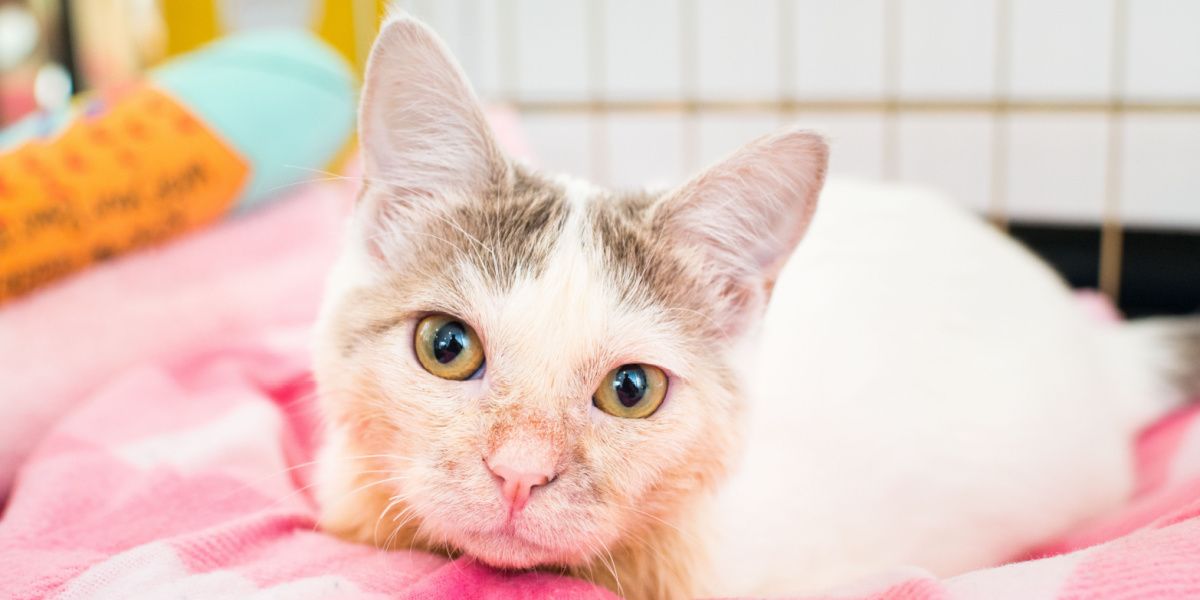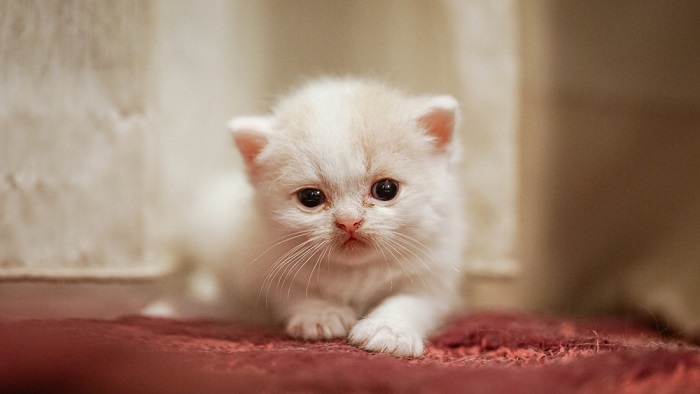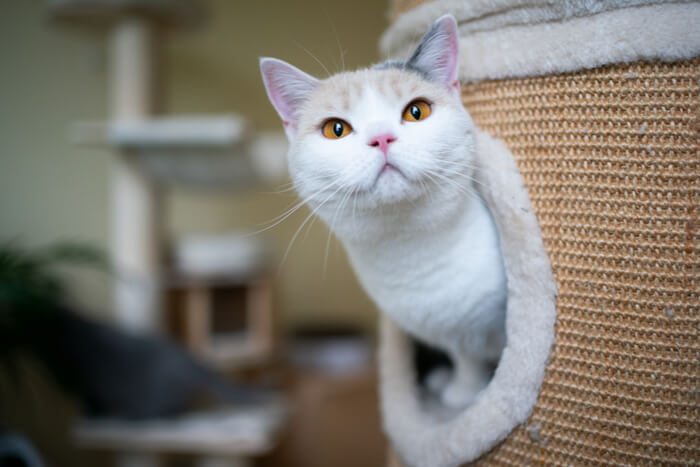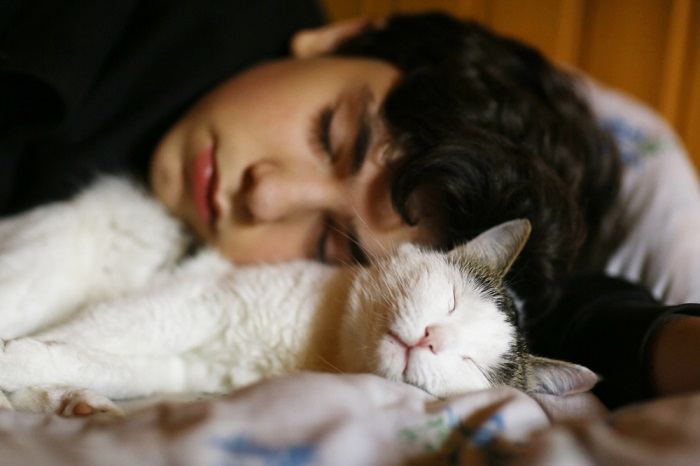
This article aims to explain the details of radial hypoplasia in cats. This is the term that is used to describe an anatomical deformity of a cat’s front legs that leads to an unusual appearance and gait in cats.
These cats may be described as RH cats, twisty cats, squittens, or kangaroo cats. Despite some of these cute-sounding names, such cats have been born with a serious physical abnormality.
Quick Overview: Radial Hypoplasia In Cats Summary







What Does Radial Hypoplasia Mean?
The radius one of the two main bones that make up the antebrachium or lower front leg in a cat (the foreleg of the cat is the equivalent of the forearm in humans). Radial hypoplasia means that the cat has a smaller than normal radius. Radial aplasia or radial agenesis means the complete absence of the radius.
The term radial hypoplasia is sometimes used to refer to cases of radial aplasia or radial agenesis. It could be argued that radial aplasia is simple an extreme version of radial hypoplasia. Another term sometimes used is foreleg micromelia.
The hind legs of cats with radial hypoplasia are usually normal, and so affected cats are able to walk on their hind legs, but they do not have normal use of their forelimbs.
Why Are Affected Kittens Given Unusual Names?
These names are usually given to affected kittens because of misunderstandings about the cause of their abnormal appearance.
- The term RH cats simple refers to an abbreviation of the term radial hypoplasia to RH.
- The term kangaroo cats (or roo cats) refers to the unusual gait of some affected cats, who, with their powerful hind legs and less developed forelegs may hop around in a similar way to a kangaroo.
- The term squitten derives from “squirrel kitten,” suggesting the offspring of a cat that has mated with a squirrel.
- The term cabbit derives from “cat rabbit,” suggesting the offspring of a cat that has mated with a rabbit.
- Clearly, it is impossible for cats to breed with either squirrels or rabbits.
What Are the Symptoms of Radial Hypoplasia?
The symptoms of feline radial hypoplasia are caused by an inability to bear weight normally on the forelimbs. Affected cats often have smaller, stiff, or twisted forelegs. Sometimes they walk with twisted front legs, sometimes they walk on their elbows, and sometimes they walk vertically on their hind legs.
The abnormal front paw of a squitten may be described as a flipper because of its unusual appearance.
How Common Is Radial Hypoplasia in Cats?
Radial hypoplasia is rare in cats, but it is so distinctive that when a case is seen, it may become well known, and the publicity may create an illusion that it is more common than it really is.
What Causes Radial Hypoplasia in Cats?

Kittens born radial hypoplasia are unable to bear weight normally on the forelimbs.
Radial hypoplasia is a congenital anomaly (the kitten is born with a smaller or absent radius). This can be caused by a hereditary genetic mutation (i.e., inherited) or it can be caused by a one-off mutation in the womb.
Is Radial Hypoplasia Associated With Other Issues?
No. Radial hypoplasia is just a physical abnormality of a kitten, and it does not indicate that anything else is wrong with a kitten. Affected creatures are usually normal in otherwise, with the same meow, purr, and charm of any other kitten.
Are Some Cat Breeds More Likely To Have Radial Hypoplasia?
As a condition with a genetic cause, radial hypoplasia may more common in certain breeds, because, by definition, each cat breed has its own specific and unique collection of genes. However there is no recognized pattern of this being more common in specific breeds.
As a general rule, it makes sense to neuter or spay affected cats to prevent this condition being passed on to the next generation of kittens. This is especially important for cat breeders who may be tempted to breed from these cats because of their “cute” appeal.
Diagnosis of Radial Hypoplasia

When a kitten is unable to bear weight on both front legs, radial hypoplasia may be suspected, and you need to take your kitten to your veterinarian for a consultation.
Your veterinarian may suspect radial hypoplasia from a simple physical examination, but radiography (x-rays) are needed to confirm the diagnosis. These will demonstrate the diminished size or absence of the radius bone.
Treatment for Radial Hypoplasia
There is no effective treatment for radial hypoplasia. The use of splints and bandages has been tried, and orthopedic surgery may be suggested, but these methods do not usually make a significant difference to the condition.
In the long term, affected cats may develop arthritis (degenerative joint disease) in the joints of affected legs, and this may need to be treated to keep the cats comfortable and pain free.
What Is the Prognosis for Cats With Radial Hypoplasia?
Cats with radial hypoplasia cannot usually use their front legs normally, and so they have a restricted lifestyle. They cannot live as outdoor cats, and they may not be able to use a litter box normally. They cannot jump down from high places in the same way as a normal cat, and so cannot live normal lives.
Some affected cats can live in family homes, while others need special care, living in animal shelters or sanctuaries as special needs cats or disabled cats. Affected cats are often popular on social media, as they have a very unusual and distinctive appearance.
Conclusion

Radial hypoplasia, as well as a number of related congenital abnormalities of the bones, is a rare condition that affects some kittens from birth. Treatment is not usually possible, and affected cats usually need some sort of special care for their lifetimes.
Frequently Asked Questions
Can cats develop radial hypoplasia at an older age?
Radial hypoplasia is a developmental condition that depends on a cat’s genes. Kittens are born this way, so it cannot develop in an older animal.
Are there other similar abnormalities that can affect cats?
There are many possible congenital abnormalities of the bones of cats.
Some kittens are born with malformed backlegs. Femoral hypoplasia means an abnormally small or absent femur, which is the main bone of the upper hind legs. Sometimes other long bones (e.g., the humerus or tibia in the forelegs, or the tibia or fibula in the hind legs), may be smaller than usual or absent.
Polydactyly is a condition where kittens are born with extra digits. Polydactyl cats have extra toes, with more than the usual four toes on each foot.
Are there any other conditions that can resemble radial hypoplasia?
Some kittens may be born with brain abnormalities, such as cerebellar hypoplasia, which mean that they have difficulties walking normally, and this may superficially resemble radial hypoplasia. Your veterinarian will be able to make this diagnosis after examining an affected kitten, and by taking x-rays if necessary in some cases.







